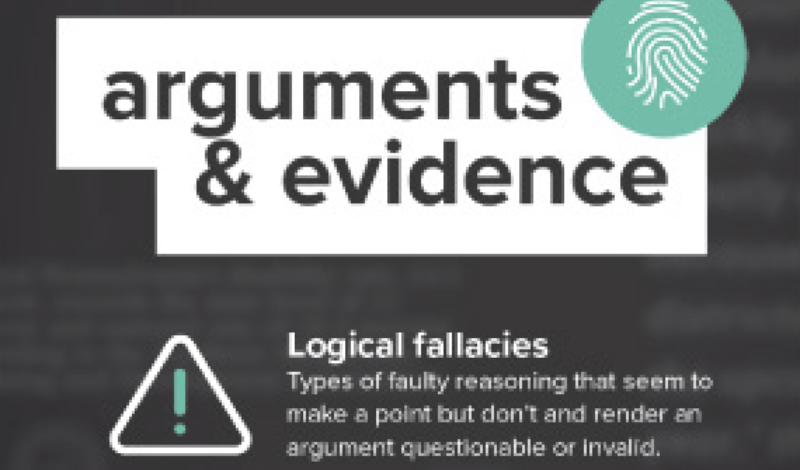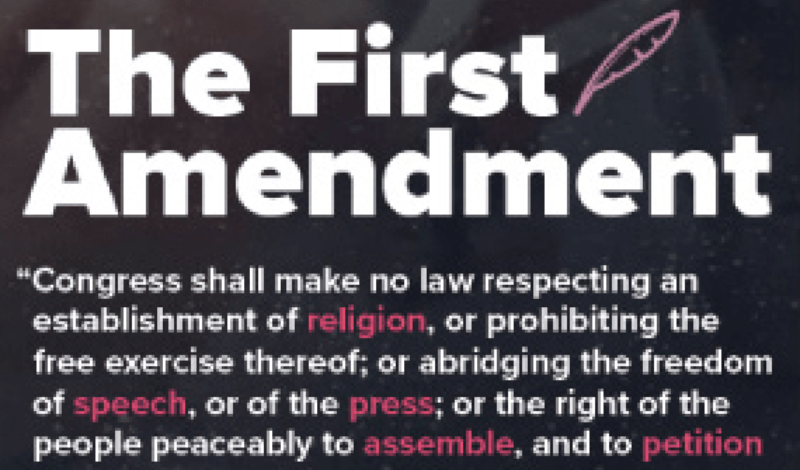
Arguments and Evidence
Reasoned arguments based on facts and evidence are an important part of civic discourse.
This poster features five reasons that people fall for conspiracy theories, which are among the most persistent and dangerous forms of misinformation. Young people are particularly vulnerable to them.
One reason that people fall for conspiracy theories is compelling stories — conspiracy theories present exciting, fascinating narratives. A second reason is simplified explanations — complex social issues and problems are rarely clear-cut. Conspiracy theories provide people with simplified explanations and someone or something to blame. A third reason is motivated reasoning — believers in conspiracy theories tend to only search for and present information that confirms their theory, and to find far-fetched reasons to dismiss anything that proves them wrong. A fourth reason is a sense of belonging — many conspiracy theory communities provide believers with a sense of connection and purpose that all people need. A fifth reason is cognitive biases — conspiracy theories seem much more credible and compelling than they actually are because they take advantage of common errors in the ways we think.
The poster also features and explains the terms “proportionality bias” as well as “illusory pattern perception,” or “patternicity.” Proportionality bias is an innate impulse to believe that major problems have major causes. Illusory pattern perception, or patternicity, is a natural tendency to see meaningful patterns and connections in unrelated events and details.
The poster is based on a new Checkology lesson called “Conspiratorial Thinking,” which is available through the News Literacy Project’s free Checkology® virtual classroom. In the lesson, learners have the opportunity to explore why people are drawn to conspiracy theories and how cognitive biases can trick them into believing that they are real. The lesson — which is hosted by Renée DiResta, research manager at the Stanford Internet Observatory, who investigates the spread of false narratives across social networks — introduces important concepts relating to conspiracy theories. In addition, several assessment questions challenge learners to apply the concepts and information introduced in the lesson.
Reasoned arguments based on facts and evidence are an important part of civic discourse.


This poster helps remind students of the five freedoms protected by the First Amendment.


From sporting events to breaking news, many stories compete for journalists’ attention.


Student voices are catalysts for positive change in schools and communities. You can empower them to be well-informed and


In this lesson, students use four key criteria to explore how journalists determine which events to cover.



